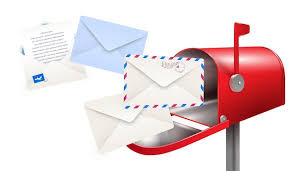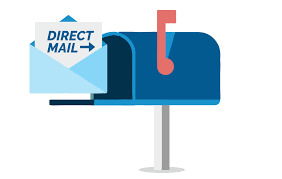#programdirectmailing
Explore tagged Tumblr posts
Text
What is the difference between programmatic direct and RTB?

In the evolving landscape of digital advertising, understanding the nuances between different buying methods is crucial. Two prominent methods are Programmatic Direct and Real-Time Bidding (RTB). While both fall under the umbrella of programmatic advertising, they differ significantly in execution, control, and outcomes.
Understanding Programmatic Advertising
Programmatic advertising refers to the automated buying and selling of online ad space. It utilizes software and algorithms to purchase digital advertising, streamlining the process and allowing for real-time adjustments.
What is Programmatic Direct?
Programmatic Direct involves a one-to-one relationship between the advertiser and publisher. Deals are negotiated directly, often involving fixed pricing and guaranteed ad placements. This method offers greater control over where and how ads appear.
Key Features:
Guaranteed Inventory: Advertisers secure specific ad placements in advance.
Fixed Pricing: Prices are agreed upon beforehand, eliminating bidding wars.
Enhanced Control: Advertisers have more say over ad placement and audience targeting.
What is Real-Time Bidding (RTB)?
RTB is an auction-based system where ad impressions are bought and sold in real-time. When a user visits a website, information about the page and the user is sent to an ad exchange, where advertisers bid to display their ads. The highest bidder wins the impression.
Key Features:
Dynamic Pricing: Prices fluctuate based on demand and competition.
Broad Reach: Access to a vast array of ad inventory across multiple publishers.
Real-Time Optimization: Campaigns can be adjusted on-the-fly based on performance data.
Choosing the Right Method
Programmatic Direct is ideal for advertisers seeking brand safety, premium inventory, and predictable outcomes.
RTB suits advertisers focused on performance, scalability, and cost-efficiency.
Conclusion
Both Programmatic Direct and RTB offer unique advantages. The choice between them depends on campaign goals, budget, and desired control. Understanding their differences enables advertisers to craft more effective and strategic advertising plans.
youtube
SITES WE SUPPORT
Programmatic Direct Mail – Wix
0 notes
Text
Programmatic Direct Mail: Bridging Digital Targeting with Physical Mail

In an age where customer expectations are higher than ever, businesses need marketing strategies that not only capture attention but also feel personalized and meaningful. Enter programmatic direct mail—a powerful tool that blends the precision of digital targeting with the tactile impact of physical mail.
What is Programmatic Direct Mail?
Programmatic direct mail is the automated process of sending targeted, personalized physical mail pieces—such as postcards, letters, or brochures—based on a customer’s digital interactions. Just like programmatic display ads are served in real-time based on user behavior, programmatic direct mail operates similarly, but with printed materials.
It's an innovative marketing tactic that allows brands to trigger a physical mailing campaign as soon as a digital event occurs—bridging the online and offline customer experience.
Why Programmatic Direct Mail Works in 2025
As consumers become increasingly savvy and desensitized to digital ads, brands need to reimagine how to stay relevant. Here’s why programmatic direct mail is gaining traction:
Cutting through digital noise: Inboxes are full, social feeds are saturated, but physical mailboxes are relatively empty.
Increased engagement: Direct mail response rates are significantly higher than digital channels. In fact, studies show response rates of up to 9% with programmatic mail.
Enhanced targeting: Digital behavior provides deep insights, which can be used to send the right message to the right person at the right time—physically.
Benefits of Bridging Digital and Physical Channels
1. Seamless Omnichannel Experiences
Customers don’t think in channels—they just want consistent and convenient experiences. Programmatic direct mail ensures that your message follows the customer across platforms, making your brand feel more cohesive.
Example: A user visits your website but doesn’t convert. Two days later, they receive a beautifully designed postcard in the mail reminding them of the product—with a discount code. That physical touch can drive them to return and complete the purchase.
2. Hyper-Personalization
Using data like browsing history, geolocation, and previous purchases, you can personalize mailers in real time. From first names to tailored offers, personalized mail boosts engagement and conversions.
3. Fast Execution with Print-On-Demand
Thanks to automation and digital printing, you can send personalized mail within 24 hours of a trigger event—no bulk printing, no warehousing, no delay.
4. Full-Funnel Integration
Programmatic direct mail fits into every stage of the funnel:
Top-of-funnel: Welcome new leads with introductory mailers.
Mid-funnel: Nurture leads with product catalogs or testimonials.
Bottom-of-funnel: Close the deal with an exclusive offer.
Who Should Use Programmatic Direct Mail?
Virtually any business that markets online can benefit. Here are a few industry examples:
- Retail & eCommerce
Convert abandoned carts, reward loyalty, or announce product drops.
- Financial Services
Onboard new clients, send statements, or upsell financial products with personalized offers.
- Healthcare Providers
Send appointment reminders, welcome kits, and follow-up communications automatically.
- Real Estate
Trigger hyper-local mailings to prospects who browse property listings or open your emails.
- Education & Nonprofits
Send enrollment reminders or donation requests based on website interactions.
Real-Time Use Case Examples
Example 1: Abandoned Cart Follow-Up
Trigger: Customer leaves items in their cart without purchasing. Mailing: Within 48 hours, they receive a personalized postcard featuring the item, a 10% discount, and a QR code to return to the cart.
Example 2: Post-Purchase Engagement
Trigger: A customer completes a purchase. Mailing: They receive a thank-you card with a referral code and bonus discount.
Example 3: Re-Engagement Campaign
Trigger: No purchase or interaction in 60 days. Mailing: A reactivation letter highlighting new products and a limited-time promo.
Best Practices for Implementing Programmatic Direct Mail
1. Use Clean, Verified Data
Successful campaigns start with accurate data. Use address verification software to prevent undeliverable mail.
2. Design for Impact
Don’t send generic postcards. Use variable data printing to personalize content, visuals, and offers.
3. Leverage QR Codes and CTAs
Bridge the physical to the digital by including QR codes that lead to personalized landing pages or digital experiences.
4. Test and Optimize
A/B test your creative, offers, timing, and formats. Use analytics to refine your strategy continuously.
5. Track ROI
Use unique coupon codes, tracking numbers, or landing pages to measure the impact of your mailers. Platforms with built-in analytics make this process seamless.
The Future of Programmatic Mail
As AI and machine learning become more integrated into marketing platforms, expect programmatic direct mail to become even more intelligent and predictive. Some exciting trends to watch:
Dynamic creatives: AI-generated copy and design based on user profiles.
Predictive mailing: Anticipate needs before users take action.
Cross-channel orchestration: Automated flows combining SMS, email, and mail for unified campaigns.
How to Choose a Programmatic Direct Mail Partner
Look for these features when selecting a provider:
API and CRM Integration: Ensure it works with your existing tools.
Real-Time Trigger Capabilities: The faster the mail is sent, the more relevant it is.
Print Flexibility: Support for different formats (letters, postcards, brochures).
Personalization Options: Ability to print unique messages for each recipient.
Analytics and Reporting: Get real-time visibility into performance metrics.
Final Thoughts
Programmatic mail and programmatic direct mail are revolutionizing how businesses engage customers. By bridging digital targeting with tangible touchpoints, brands can create deeper, more memorable experiences—while benefiting from high ROI and low competition.
If your business is looking for a way to stand out, now is the perfect time to try programmatic mail. It’s cost-effective, easy to automate, and impressively efficient at turning digital interest into real-world action.
youtube
SITES WE SUPPORT
Programmatic Direct Mail – Wix
0 notes
Text
How Programmatic Direct Mail is Revolutionizing Personalized Marketing
Personalization has become a cornerstone of effective marketing, with consumers increasingly expecting tailored experiences. Programmatic Direct Mail is at the forefront of this shift, transforming how brands deliver personalized content and engage with their audiences.

The Role of Data in Personalization
At the heart of PDM's effectiveness is its reliance on robust data analytics. By capturing and analyzing consumer behaviors—such as browsing history, purchase patterns, and engagement metrics—brands can craft highly personalized mail content that resonates with individual recipients.
postalytics.com
Benefits of Personalized Programmatic Direct Mail
Increased Engagement: Personalized mail that reflects a recipient's interests and behaviors is more likely to capture attention and elicit a positive response. postpilot.com
Higher Conversion Rates: Tailored content that addresses specific consumer needs or preferences can significantly boost conversion rates, leading to increased sales and customer loyalty. wolverinemail.com
Enhanced Customer Experience: Delivering relevant and personalized content through PDM contributes to a seamless and satisfying customer journey, strengthening brand-consumer relationships. gourmetads.com
Case Studies Highlighting the Impact of PDM
E-Commerce Retailer: An online retailer implemented PDM to target customers who abandoned shopping carts. By sending personalized mail featuring the abandoned products along with exclusive discounts, the retailer achieved a 15% increase in cart recovery rates.
Subscription Service: A subscription-based company used PDM to re-engage inactive subscribers. Personalized mail highlighting new features and tailored recommendations led to a 25% reactivation rate among the targeted audience.
Integrating PDM into Omnichannel Marketing Strategies
To maximize the benefits of PDM, brands are integrating it into their broader omnichannel marketing strategies. By aligning direct mail efforts with digital campaigns, businesses can create cohesive and immersive experiences that reinforce messaging across multiple touchpoints.
martech.org
Challenges and Considerations
While PDM offers numerous advantages, marketers must address certain challenges to fully harness its potential:
Data Privacy: Ensuring compliance with data protection regulations is paramount when collecting and utilizing consumer data for personalized mail campaigns.
Integration Complexity: Seamlessly integrating PDM with existing digital marketing platforms and CRM systems requires careful planning and execution.
Cost Implications: Although PDM can yield high returns, the initial investment in technology and data infrastructure may be substantial.
Conclusion
Programmatic Direct Mail represents a significant advancement in the realm of personalized marketing. By merging the tangible impact of direct mail with the precision of digital data, PDM enables brands to deliver highly relevant content that resonates with consumers. As technology continues to evolve, PDM is poised to become an integral component of effective marketing strategies, driving engagement, conversion, and customer loyalty in an increasingly competitive landscape.
youtube
SITES WE SUPPORT
Programmatic Direct Mail – Wix
0 notes
Text
Want to Try Programmatic Mail For Your Business?
Programmatic mail is revolutionizing direct mail by combining the precision of digital marketing with the tangibility of print. If you want to engage prospects and customers with personalized, timely, and data-driven print mailers—programmatic mail is the future-ready solution you need.

What is Programmatic Mail? Programmatic mail is the automated sending of direct mail triggered by user behavior, CRM data, or marketing events. Similar to programmatic display ads, it delivers personalized physical mail based on online actions, such as website visits, cart abandonment, or email interactions.
Key Benefits of Programmatic Mail
1. Real-Time Triggering Send mail within 24–48 hours of a user action. For example, if someone abandons a cart, they can receive a follow-up postcard encouraging them to complete their purchase.
2. Hyper-Personalized Messaging Use behavioral and CRM data to customize messages, images, and offers. Personalization boosts response rates and improves customer experience.
3. Seamless CRM and Martech Integration Programmatic mail solutions integrate with CRM platforms like Salesforce, HubSpot, and ecommerce platforms like Shopify, Magento, and WooCommerce, enabling automated workflows.
4. Improved ROI and Attribution Track response rates using QR codes, PURLs, and unique discount codes. This helps attribute conversions directly to your mail campaigns.
5. Scalable for All Business Sizes Whether you're a small ecommerce store or a large enterprise, programmatic mail scales according to your business needs without excessive manual effort.
6. Enhances Omnichannel Strategy Combine digital retargeting with physical mail to increase brand visibility and conversion touchpoints. Physical mail reinforces digital impressions.
How to Implement Programmatic Mail
Step 1: Choose the Right Platform Look for vendors that offer integration with your existing tools, real-time data syncing, and analytics dashboards. Leading providers include Lob, PostPilot, PebblePost, and Enthusem.
Step 2: Define Trigger Events Identify touchpoints that should initiate a mailer—e.g., cart abandonment, browsing behavior, loyalty milestones, etc.
Step 3: Design Dynamic Templates Create flexible templates where content can be auto-filled based on recipient data. Use fields for names, products viewed, discounts, and calls to action.
Step 4: Launch and Monitor Once set up, your campaigns will run automatically. Monitor performance via dashboards and optimize based on open rates, redemptions, and conversions.
Use Cases for Programmatic Mail
Abandoned cart recovery
Welcome messages for new subscribers
Loyalty program engagement
Win-back campaigns
Cross-sell or upsell promotions
Is Programmatic Mail Right for Your Business? If you want to:
Improve direct mail ROI
Automate print communication
Integrate offline with digital marketing
Send timely, personalized messages Then yes—programmatic mail is a smart investment.
Start Small and Scale You don’t have to go all-in on day one. Start with one or two triggers (like cart abandonment), test your results, and scale your automation from there.
Conclusion Programmatic mail blends the power of print with the efficiency of digital automation. Businesses that leverage this channel experience better customer engagement, higher conversions, and seamless marketing operations. If you’re ready to take your offline outreach to the next level, now is the time to try programmatic mail.
Final Thoughts Direct mail marketing—especially with cost awareness and modern automation tools like programmatic mail—is far from obsolete. It offers unique advantages that digital channels can’t match, particularly when personalization, trust, and ROI are your goals. Whether you're just starting with direct mail or optimizing existing campaigns, these strategies will help you stand out in today’s competitive landscape.
youtube
SITES WE SUPPORT
Programmatic Direct Mail – Wix
0 notes
Text
Direct Mail Marketing Cost Estimations
Understanding the cost of direct mail marketing is essential for budgeting and planning effective campaigns. While direct mail is a powerful tool, the total cost can vary depending on design, printing, mailing volume, postage, targeting, and tracking. Here is a detailed breakdown to help you estimate and manage your direct mail marketing expenses.

1. Design and Creative Costs Designing a direct mail piece involves layout, copywriting, branding, and sometimes professional photography. Costs can range:
DIY Templates: Free to $100
Freelance Designer: $150 to $500 per piece
Agency Services: $500 to $2,000 depending on complexity
2. Printing Costs Printing costs depend on paper quality, size, color, and quantity. Common formats include postcards, letters, catalogs, and brochures. Estimated costs:
Postcards: $0.20 – $1.00 per unit
Letters (envelope, insert, printing): $0.50 – $2.00
Catalogs/Brochures: $1.00 – $3.00
3. Mailing List Acquisition If you're mailing to prospects, you may need to purchase or rent a mailing list.
Purchased Lists: $0.10 – $0.50 per contact
Targeted Niche Lists: $0.50 – $1.00+ per contact
4. Data Processing and Personalization Cleaning and segmenting data for personalization:
Basic Processing: $50 – $200 per campaign
Advanced Personalization: $0.10 – $0.50 per mail piece
5. Postage Rates Postage is a significant portion of direct mail costs. USPS rates as of 2025:
First-Class Mail: $0.68 per piece
Marketing Mail: $0.35 – $0.45 per piece (bulk discounts available)
6. Mailing Services and Fulfillment Professional mailing services handle addressing, sorting, bundling, and delivery to USPS.
Fulfillment: $0.05 – $0.30 per piece
7. Tracking and Analytics Add-ons like PURLs, QR codes, or trackable phone numbers:
PURLs: $0.10 – $0.50 per piece
Call Tracking: $30 – $100/month
QR Code Services: Often bundled or minimal cost
Sample Cost for 1,000 Postcards
Design: $300
Printing: $600 (at $0.60 each)
Mailing List: $200
Data Processing: $100
Postage: $400 (at $0.40 each)
Fulfillment: $100
Tracking: $50 Total: $1,750 or $1.75 per postcard
Cost-Saving Tips
Use USPS Marketing Mail for volume discounts
Print in bulk to reduce per-piece rates
Reuse existing creative templates
Target segmented, high-performing lists
youtube
SITES WE SUPPORT
Programmatic Direct Mail – Wix
0 notes
Text
Benefits of Direct Mail Marketing

Direct mail marketing remains one of the most effective channels for businesses to connect with customers in a tangible, personal, and impactful way. Despite the rise of digital marketing, direct mail has sustained its relevance due to its high engagement rates, targeting capabilities, and potential for ROI. Below, we explore the key benefits of direct mail marketing and how it can enhance your overall marketing strategy.
1. Tangible and Trustworthy Communication Direct mail provides a physical piece of communication that recipients can hold, feel, and review at their convenience. This tactile experience creates a sense of legitimacy and trust that digital channels often lack. Physical mail stands out in a crowded digital landscape, giving businesses an edge in brand recall and credibility.
2. Higher Engagement Rates Compared to Digital Direct mail boasts significantly higher open and response rates than email marketing. According to the Data & Marketing Association (DMA), direct mail response rates can be up to 9% for house lists and 5% for prospect lists, far surpassing average email response rates. Consumers are more likely to read, keep, and act upon a well-designed direct mail piece.
3. Advanced Targeting and Personalization With modern data analytics, direct mail campaigns can be highly personalized. Businesses can target customers based on demographics, purchase history, location, and even behavior. This level of personalization enhances relevance and increases the likelihood of conversion.
4. Complements Digital Marketing Direct mail can seamlessly integrate with digital campaigns to create a multi-channel experience. For instance, including QR codes or personalized URLs (PURLs) in direct mail pieces can lead recipients to a landing page, app, or video—bridging offline and online engagement.
5. Longer Shelf Life Unlike emails that can be easily deleted, direct mail pieces often linger in homes or offices, offering prolonged exposure. Whether it’s a catalog on a coffee table or a postcard pinned to a fridge, this extended presence keeps your brand top-of-mind.
6. Easy Performance Tracking Direct mail’s performance is measurable through techniques such as unique promo codes, trackable phone numbers, and PURLs. These tools enable businesses to evaluate ROI effectively and refine future campaigns based on solid data.
7. Builds Stronger Customer Relationships Receiving a personalized mail piece makes the recipient feel valued. This one-on-one touch can increase customer loyalty and retention. It’s especially effective for special promotions, birthday greetings, or exclusive offers.
8. Effective for Local and Niche Markets For businesses targeting specific geographic areas or niche audiences, direct mail can be more effective than broad digital ads. Localized mailers can boost foot traffic, event attendance, or community engagement.
9. Less Competition, More Visibility With many companies focusing exclusively on digital channels, mailboxes are less crowded. This gives direct mail an opportunity to shine with less competition and more visibility.
10. Proven ROI Despite its upfront costs, direct mail delivers a strong return on investment. Studies show that direct mail campaigns can yield a 29% return when well-executed, especially when paired with a compelling offer and clear call to action.
youtube
SITES WE SUPPORT
Programmatic Direct Mail – Wix
0 notes
Text
Want to Try Programmatic Mail For your Business?

In today’s digitally saturated world, businesses are constantly searching for innovative ways to break through the noise and capture their audience’s attention. While email inboxes are overcrowded and digital ads are increasingly blocked or ignored, there’s a powerful solution that combines the precision of digital targeting with the high engagement rates of traditional marketing: programmatic mail.
What is Programmatic Mail?
Programmatic mail refers to the automated process of sending physical mail based on digital behavior. It allows marketers to deliver personalized, timely, and relevant direct mail pieces triggered by specific online actions—such as website visits, abandoned carts, or completed forms.
This cutting-edge approach merges data-driven marketing with print delivery systems, offering businesses a new way to engage customers in a more meaningful, tactile way.
How Does Programmatic Mail Work?
The core mechanism behind programmatic mail involves integrating your digital platforms—such as websites, CRMs, and advertising tools—with a direct mail automation solution. Here's a simple breakdown:
Trigger Event: A user performs an action online (e.g., views a product page).
Data Capture: The user’s data is collected through cookies or customer profiles.
Mail Automation: The system generates a personalized mail piece (like a postcard or letter).
Delivery: The mail is printed and sent to the user’s physical address—typically within 24 to 48 hours.
This fast, automated cycle ensures that your messaging is always relevant, timely, and hyper-personalized.
Why Should You Try Programmatic Mail for Your Business?
Here are some key advantages of leveraging programmatic mail:
1. Higher Engagement Rates
Unlike email, physical mail has a longer shelf life and is often read more attentively. With personalization and timing on your side, your direct mail campaigns are more likely to be noticed and remembered.
2. Bridges Online and Offline Marketing
Programmatic mail connects your digital efforts with real-world touchpoints. It supports omnichannel strategies that enhance customer experience and increase brand recall.
3. Automation and Scalability
Once set up, your programmatic direct mail campaigns run automatically—saving time and allowing you to scale your efforts without added workload.
4. Personalization at Scale
Send highly personalized messages to thousands of recipients based on real-time data without sacrificing quality or speed.
5. Improved ROI
When used correctly, programmatic mail delivers higher conversion rates than digital-only campaigns—especially in retargeting scenarios.
Use Cases of Programmatic Mail in Business
Whether you're an eCommerce brand, a service provider, or a B2B enterprise, programmatic mail can fit into your customer journey. Here are some powerful use cases:
Cart Abandonment Reminders: Send a reminder with a discount code via postcard when a customer abandons their cart.
Welcome Mailers: Trigger a welcome letter when a user signs up for your platform.
Reactivation Campaigns: Reconnect with inactive users through personalized direct mail.
Loyalty Programs: Send exclusive physical offers to loyal customers to drive repeat business.
How to Get Started with Programmatic Mail
Step 1: Define Your Goals and Triggers
Decide which online actions will trigger your mail campaigns. Common examples include form fills, email signups, or cart abandonment.
Step 2: Integrate a Programmatic Direct Mail Platform
Choose a service that supports API integrations or CRM connections like Salesforce, HubSpot, or Shopify.
Step 3: Create Your Mail Templates
Design eye-catching, brand-consistent templates for each trigger event. Make sure to include dynamic personalization features.
Step 4: Launch and Monitor
Start your campaign and monitor key metrics such as delivery times, conversion rates, and ROI.
youtube
SITES WE SUPPORT
Programmatic Direct Mail – Wix
0 notes
Text
Why Direct Mail Marketing Still Delivers Results in a Digital World

In an age dominated by emails, social media, and digital ads, it may seem surprising that direct mail marketing remains not just relevant, but highly effective. This article explores why direct mail continues to deliver results and how businesses can leverage it in a digitally saturated world.
1. Tangible and Memorable
Unlike emails that vanish with a click, physical mail is tactile and leaves a lasting impression. People tend to read and remember well-designed mailers, especially when they are personalized.
2. Less Competition, More Attention
With inboxes overflowing, physical mailboxes are often underutilized by marketers. This reduced competition means your message stands out more clearly.
3. Higher Engagement Rates
According to Canada Post, direct mail gets 4.4 times more attention than digital ads. The average lifespan of mail in a household is 17 days—providing multiple opportunities for interaction.
4. Trust and Credibility
Consumers view direct mail as more trustworthy than digital communications. It’s harder to fake or spam, making it ideal for sensitive offers like financial services or healthcare.
5. Ideal for Multichannel Campaigns
Direct mail bridges offline and online. QR codes, personalized URLs (PURLs), and coupon codes link mail to digital actions, increasing conversion rates.
6. Measurable ROI
Thanks to tracking tools and automation, you can measure response rates, analyze behavior, and calculate ROI with precision. When combined with address verification software, you also cut down on waste and failed deliveries.
7. Emotional Impact
Receiving personalized mail fosters a sense of connection. This emotional resonance boosts brand loyalty and recall far more effectively than a fleeting digital ad.
8. Works for All Business Sizes
Whether you're a solopreneur or a large corporation, direct mail campaigns can be scaled to your budget and goals. Targeted lists allow small businesses to compete effectively in niche markets.
Conclusion Direct mail marketing is far from obsolete—in fact, it’s thriving in today's digital ecosystem. Its ability to grab attention, build trust, and drive engagement makes it a vital component of any modern marketing strategy. As brands strive for authenticity and real connection, direct mail proves time and again that it delivers results in ways digital often can’t.
youtube
SITES WE SUPPORT
Programmatic Direct Mail – Wix
0 notes
Text
How to Master Direct Mail Marketing for Maximum ROI

Direct mail marketing continues to be a high-ROI channel when implemented strategically. In this comprehensive guide, you’ll learn how to master direct mail marketing and ensure your investment drives measurable results.
1. Define Your Goals
Start by identifying clear objectives—brand awareness, lead generation, customer retention, or sales conversions. Your goals will shape the campaign structure, design, and messaging.
2. Understand Your Audience
Effective direct mail starts with understanding your target demographics. Use customer personas, behavior data, and market segmentation to develop personalized and relevant messages.
Tips:
Segment by geography, buying behavior, or past interactions
Use clean and validated mailing lists
Leverage address verification APIs to reduce undelivered mail
3. Craft Compelling Offers
Your mail piece must grab attention and prompt action. Whether it’s a discount code, limited-time offer, or exclusive access, make your value proposition irresistible.
Best Practices:
Use eye-catching headlines and visuals
Highlight benefits over features
Include a clear CTA (call-to-action)
4. Personalize Your Message
Variable data printing allows you to tailor content for each recipient—names, locations, purchase history, and preferences. Personalized mail dramatically boosts response rates.
5. Design for Engagement
An attractive, professional design increases the likelihood that your mail will be opened and read. Choose formats that match your brand and message—postcards, brochures, letters, or dimensional mailers.
Pro Tips:
Use high-quality materials
Add QR codes or PURLs for digital tracking
A/B test layouts and formats
6. Time Your Campaigns
Schedule your campaigns around customer buying cycles, seasonal trends, and holidays. Consistency builds trust and brand recognition.
7. Integrate with Digital Marketing
Combine direct mail with email, social media, and paid ads for omnichannel reach. Trigger mail based on user behavior, such as abandoned carts or email sign-ups.
8. Track and Optimize Performance
Use tools to monitor responses—coupon redemptions, web visits via QR codes, or dedicated phone lines. Analyze what works and refine future campaigns accordingly.
Metrics to Track:
Response rate
Conversion rate
ROI and cost per acquisition
Lifetime customer value
Conclusion
Mastering direct mail marketing involves data-driven targeting, creative design, personalization, and performance tracking. When done right, it delivers exceptional returns and customer engagement that digital ads often struggle to match.
youtube
SITES WE SUPPORT
Programmatic Direct Mail – Wix
0 notes
Text
Top Direct Mail Services in Canada

Direct mail remains a powerful marketing strategy in Canada, especially when executed with precision and creativity. Despite the rise of digital marketing, physical mail pieces still cut through the noise, offering unmatched engagement and ROI. This article explores the top direct mail services in Canada, helping businesses choose the right provider for their marketing needs.
1. Canada Post Smartmail Marketing
As the national postal service, Canada Post offers robust direct mail marketing solutions under its Smartmail Marketing program. It provides targeting tools, data analytics, and customizable print services for both small and large businesses. With extensive geographic reach and delivery accuracy, it is ideal for campaigns that demand broad coverage and reliable distribution.
Key Features:
Neighbourhood Mail, Personalized Mail, and Postal Code Targeting
Data-driven targeting capabilities
Integration with digital campaigns
2. Troi Mailing Services
Based in Toronto, Troi Mailing Services is known for its full-service direct mail solutions, including design, printing, and distribution. They specialize in both B2B and B2C campaigns.
Key Features:
Quick turnaround times
Variable data printing
Targeted mailing lists
3. Flagship Direct
Flagship Direct, located in Winnipeg, offers end-to-end direct mail services, including printing, personalization, and fulfillment. Their innovative technologies ensure accurate and timely deliveries.
Key Features:
High-speed laser printing
Data cleansing and address verification
Mailing and logistics management
4. Data Direct
Data Direct is a Vancouver-based direct mail provider offering campaign management, printing, and data processing. They focus on quality assurance and secure data handling, making them a top choice for sensitive or regulated industries.
Key Features:
Address verification services
Full-colour printing
Detailed reporting and analytics
5. Prime Data
Located in Aurora, Ontario, Prime Data provides programmatic direct mail services that combine digital triggers with physical mail delivery. Their automation tools are perfect for eCommerce, healthcare, and nonprofit sectors.
Key Features:
Integration with CRM and marketing automation tools
Personalized direct mail triggered by online behavior
Climate-conscious mail campaigns
How to Choose the Right Direct Mail Provider
Consider factors like budget, campaign complexity, industry experience, personalization needs, and data security. A good provider will offer scalability, targeting expertise, and end-to-end solutions.
Conclusion
Whether you’re a local startup or a national brand, these top direct mail services in Canada can elevate your campaigns. With their innovative features and comprehensive support, businesses can ensure their message lands in the right hands.
youtube
SITES WE SUPPORT
Programmatic Direct Mail – Wix
1 note
·
View note
Text
The Future of Marketing: Understanding Programmatic Direct Mail
In the rapidly evolving landscape of marketing, businesses continually seek innovative strategies to engage consumers effectively. One such emerging approach is Programmatic Direct Mail (PDM), which integrates the precision of digital marketing with the tangible impact of traditional direct mail. This fusion offers a promising avenue for brands aiming to enhance personalization and drive higher engagement rates.

Defining Programmatic Direct Mail
Programmatic Direct Mail refers to the automated process of sending highly targeted physical mail pieces to consumers based on real-time data and online behaviors. Unlike traditional direct mail campaigns that rely on static mailing lists, PDM leverages digital insights to deliver personalized content, thereby increasing relevance and response rates.
fssi-splash.com
The Mechanism Behind Programmatic Direct Mail
The effectiveness of PDM lies in its ability to harness real-time consumer data. When a user interacts with a brand's digital platform—such as browsing products or abandoning a shopping cart—these actions trigger the automated dispatch of tailored direct mail. This mail typically arrives within a short timeframe, keeping the brand fresh in the consumer's mind and encouraging conversion.
pebblepost.com
Advantages of Programmatic Direct Mail
Enhanced Targeting: PDM allows marketers to utilize detailed consumer data, enabling precise audience segmentation based on behaviors, preferences, and demographics. This precision ensures that marketing messages resonate with the intended recipients. criterionglobal.com
Personalization: By integrating data-driven insights, PDM facilitates the creation of customized content that aligns with individual consumer interests, thereby fostering a more personalized experience. postpilot.com
Measurable Outcomes: The integration of digital tracking mechanisms with direct mail campaigns allows for comprehensive performance analysis, enabling marketers to assess return on investment accurately. pebblepost.com
Automation Efficiency: The automation inherent in PDM streamlines the campaign process, reducing manual intervention and allowing for scalable marketing efforts. postgrid.com
Programmatic Direct Mail in the Context of Digital Marketing
In an era where consumers are inundated with digital advertisements, PDM offers a refreshing alternative by combining the tactile nature of physical mail with the precision of digital targeting. This hybrid approach not only captures attention but also enhances brand recall and engagement.
martech.org
Future Prospects of Programmatic Direct Mail
The trajectory of PDM indicates a significant role in the future of marketing strategies. As data analytics and automation technologies advance, the capabilities of PDM are expected to expand, offering even more refined targeting and personalization. This evolution positions PDM as a pivotal tool for marketers aiming to navigate the complexities of consumer engagement in a digital-first world.
gourmetads.com
youtube
SITES WE SUPPORT
Programmatic Direct Mail – Wix
0 notes
Text
How to Measure the Success of Your Direct Mail Marketing Campaigns
Measuring the success of direct mail marketing campaigns is crucial for understanding their effectiveness and optimizing future efforts. Unlike digital channels, direct mail requires specific strategies to track performance accurately. Here are key metrics and methods to evaluate your direct mail campaigns:

Key Metrics to Assess
Response RateThis metric indicates the percentage of recipients who responded to your direct mail piece. It is calculated by dividing the number of responses by the total number of mailed pieces and multiplying by 100. A higher response rate suggests that your content and offer resonated well with the audience.
Conversion RateBeyond responses, the conversion rate measures the percentage of recipients who completed the desired action, such as making a purchase or signing up for a service. This metric provides insight into the campaign's effectiveness in driving tangible results.
Cost per Acquisition (CPA)CPA calculates the average cost incurred to acquire a new customer through the campaign. It is determined by dividing the total campaign cost by the number of new customers gained. Monitoring CPA helps in assessing the profitability of your direct mail efforts.
Return on Investment (ROI)ROI measures the overall profitability of the campaign. It is calculated by subtracting the campaign cost from the revenue generated, dividing by the campaign cost, and multiplying by 100. A positive ROI indicates a successful campaign.
youtube
SITES WE SUPPORT
Programmatic Direct Mail – Wix
0 notes
Text
The Role of Automation in Direct Mail Marketing: Save Time and Increase ROI
In today's rapidly evolving marketing landscape, businesses are continually seeking innovative strategies to engage customers effectively while optimizing resources. Direct mail marketing, a traditional yet potent channel, has experienced a resurgence in effectiveness, especially when integrated with automation technologies. This fusion not only streamlines processes but also significantly enhances return on investment (ROI).

Understanding Direct Mail Automation
Direct mail automation involves leveraging software solutions to manage, execute, and monitor direct mail campaigns seamlessly. This encompasses designing personalized content, automating printing and mailing processes, and integrating with customer relationship management (CRM) systems for targeted delivery. By automating these tasks, businesses can reduce manual interventions, minimize errors, and ensure timely communications with their audience.
Benefits of Direct Mail Automation
Enhanced Efficiency and ProductivityAutomation reduces the manual workload associated with traditional direct mail campaigns. Tasks such as data entry, list management, and scheduling are streamlined, allowing marketing teams to focus on strategic planning and creative development. This shift not only accelerates campaign deployment but also improves overall productivity.
Personalization at ScaleModern consumers expect personalized experiences. Automated direct mail systems can utilize customer data to create tailored content that resonates with individual preferences and behaviors. This level of personalization fosters stronger connections with recipients, increasing the likelihood of engagement and conversion.
Cost SavingsBy automating processes, businesses can reduce operational costs associated with manual labor, printing errors, and delayed deliveries. Moreover, targeted mailings ensure that resources are allocated to prospects with higher conversion potential, maximizing the efficiency of marketing budgets.
Improved Tracking and AnalyticsAutomated systems offer robust tracking capabilities, providing real-time data on delivery statuses, response rates, and customer interactions. This data-driven approach enables marketers to assess campaign performance accurately and make informed decisions for future initiatives.
Seamless Integration with Digital ChannelsIntegrating direct mail automation with digital marketing platforms creates a cohesive omnichannel experience. For instance, a customer interacting with an email campaign can trigger a personalized direct mail piece, reinforcing the message and enhancing brand recall.
Impact on ROI
The implementation of direct mail automation has a profound effect on ROI. According to industry insights, direct mail marketing has surpassed email in effectiveness, boasting an average response rate of 4.4% compared to email's 0.12% in 2024.
lsdirect.com Furthermore, businesses that integrate automation into their direct mail strategies have reported significant improvements in ROI, response rates, and conversion rates compared to other channels.
lob.com
Implementing Direct Mail Automation
To harness the benefits of direct mail automation, consider the following steps:
Select the Right Automation PlatformChoose a direct mail automation platform that aligns with your business objectives and integrates seamlessly with your existing CRM and marketing tools. Features to look for include user-friendly interfaces, customization options, and robust analytics capabilities.
Develop Targeted Mailing ListsUtilize data analytics to segment your audience based on demographics, purchase history, and engagement levels. This segmentation allows for precise targeting, ensuring that your mailings reach the most receptive recipients.
Design Personalized ContentLeverage customer data to craft personalized messages that resonate with individual preferences. Personalization can range from addressing recipients by name to tailoring offers based on past behaviors.
Integrate with Digital CampaignsCreate a unified marketing strategy by integrating direct mail with digital channels. For example, a customer abandoning an online shopping cart could receive a follow-up direct mail piece with a special incentive to complete the purchase.
Monitor and OptimizeContinuously track campaign performance through the automation platform's analytics tools. Analyze key metrics such as response rates, conversion rates, and ROI to identify areas for improvement and optimize future campaigns.
Conclusion
Direct mail automation represents a pivotal advancement in marketing, merging the tangible impact of traditional mail with the efficiency of modern technology. By adopting automated solutions, businesses can enhance operational efficiency, deliver personalized experiences, and achieve superior ROI. As consumer expectations continue to evolve, integrating automation into direct mail strategies will be instrumental in maintaining a competitive edge in the marketplace.
youtube
SITES WE SUPPORT
Programmatic Direct Mail – Wix
0 notes